Native Trout Conservation
The conservation of Montana’s native fish is a complex, long-term, and potentially very expensive endeavor. Like many conservation efforts there are always tradeoffs, differences of opinions regarding conservation and restoration approaches, and the difficulty of trying to breakthrough our information-laden society to garner support in terms of spirit, time, effort, and money.
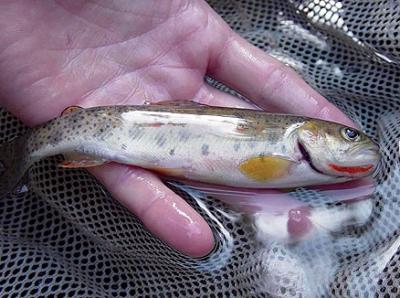
On many fronts, the state of Montana, along with Yellowstone Park, is leading the way in native fish conservation. Montana currently has hundreds of native fish species and habitat conservation and restoration projects under way. “It’s overwhelming,” says Jim Magee, Fisheries Biologist with MT FWP, “but it’s what needs to be done.” These projects vary from improving riparian areas, building fish ladders, enhancing stream flows, developing and enhancing pools, in many cases creating barriers to protect certain fish populations, netting non-natives and the controversial use of fish toxicants to wipeout non-native populations. Our state’s hatcheries play an important role in these efforts by maintaining conservation broodstock to preserve the genetics of the population.
A good number of these projects are fragmented, small, and individually driven, such as a landowner fencing off domestic animals to restore stream habitat, the angler who follows catch and release regulations, and hopefully the end of bucket biology (anglers moving fish into non-native areas with buckets). However, Montana is also home to some of the most comprehensive and innovative restoration projects in the nation today such as the Fluvial Artic Grayling project underway in the Big Hole, the Blackfoot Challenge just outside Missoula, and the recently signed multi-state agency, multi-federal agency and multi-fisheries agreement for the Cutthroat Trout conservation effort. “Overall, I think we’re doing better than many other states,” says Bruce Farling, Executive Director Trout Unlimited. “We have some of the best field biologists. Montana has been the leader in restoration and conservation efforts. We’ve done some things that are really cool, like bringing back Westslope Cutthroat Trout in the Blackfoot.”
Though some of these conservation efforts have been in the works for 20-plus years, the idea of fish conservation, let alone native fish conservation, remains a very misunderstood and relatively new topic that often flies under the radar in the hearts and minds of many. Did you know that of the 90 fish species we have in Montana almost 4 percent of these are non-native fish? And though Montana anglers, native and non-native alike, enjoy fishing these fish (such as the Rainbow, Brook and Brown Trout), they are degrading— and in some cases destroying—Montana’s native populations (such as the Yellowstone and Westslope Cutthroat Trout). “We think one of the most challenging and least addressed issues for our native fish is the conflict that they have with introduced species,” says Bruce Farling, Trout Unlimited. “Non-native lake trout and northern pike are very predacious in Bull Trout habitat. Then there is the loss of genetic purity due to hybridization between non-native Rainbow and the native Yellowstone and Westslope Trout. Many people think the only problem is habitat over harvest but really, the toughest thing to fix is how to deal with the non-natives that we’ve dumped here. We’re not saying get rid of non-natives but we’re saying we still need to have room for natives.”
Most of the non-native fish were stocked in the early 1900’s by the fisheries department; this initiative has long since lost its backing, though the effects of these efforts are long lasting and in many cases irreversible—such as the stocking of lake trout in Montana’s and Yellowstone Parks lakes. The non-native Lake Trout’s insatiable appetite for native trout has drastically changed bio-diversity and ecosystems of many of our lakes and trickled down to effect stream and tributaries as well. We have learned much over the last 100 years and part of that has been an understanding and appreciation for the importance of our native bio-diversity. The loss of native species, even at a small percentage of the genetic level, often creates an imbalance and results in dire effects for surrounding species. Here also, there are many cases where the loss of the native’s are measured more in terms of pondering the age-old question: What is it in society that we value? Dr. Bob Gresswell, PhD and Research Biologist with the USGS Northern Rocky Mountain Science Center, commented, “It’s like a canary in a coal mine. When we start to lose species what kind of world will we have—you cannot have substitution without effect.” Bob adds that over the past several years the focus has gone from one of wild trout to that of native trout. “Though it’s a matter of degree especially at the genetic level, what we’re protecting is the integrity of our landscapes. Without this we lose.”
There are other factors contributing to the loss of our native fish besides the problems that come from the predation, hybridization and flat out out-competition of non-native’s in Montana’s waters. Jim Magee, Montana FWP Fisheries Biologist in charge of the Fluvial Artic Grayling conservation project, identifies three additional factors. The first is habitat fragmentation, which happens when stream and tributaries are naturally or unnaturally disconnected either from forest fires, boulders and debris or from the multitude of dams and culverts spread across the Montana’s river and tributary systems. Next is habitat degradation aided by Montana’s multi-year drought and overall climate change; here changes in water temperatures along with lost stream connections aids in fragmenting native populations limiting cold-water species natural range and destroying habitat. Oddly enough, in some cases this fragmentation of habitat has protected some of our native species as it has kept them separated from non-natives and the problems that come with them.
Protection of our native species relies on more than simply a listing under the Endangered Species Act (ESA). Under this federal program, species are considered based on the status of the species as a whole, across their entire historical range within the U.S.. “We acknowledge areas where they’re may be particular problems,” Lynn Kaeding, Chief Branch of Native Fisheries Management for the U.S. Fish and Wildlife Service, “but those problems may not be large enough to be detrimental to the entire population. As a federal agency we look at the current status, the population trend and the overall population of that species in the U.S. today and into the foreseeable future.” Lynn noted as an example the petition to list the Westslope Cutthroat Trout—which by the way is officially designated as Montana’s state fish. “I think there is a tendency for us, particularly the petitioners, to be aware of fish in a particular range or area but not the overall awareness of the status of the species across its entire range.” Lynn adds, “For example, the Westslope Cutthroat Trout occur in more than just the Gallatin River, they still occur in over 23,000 miles of stream across the U.S.” (Montana actually has three species listed under the Endangered Species Act. The Pallid and White Sturgeon are listed as Endangered and the Bull Trout is listed as Threatened. Though the Fluvial Arctic Grayling is not listed in any way under the ESA, its listing is currently being challenged.)
Dr. Bob Gresswell’s remarks regarding a matter of degree are particularly relevant in this case. “The data is as good as we have but the problem comes when we look at genetic purity of these fish,” he says and continues, “Of the 23,000 stream miles of Westslope Cutthroat Trout, what percentage is genetically pure? What percent has not hybridized or lost a portion of its life history to another species?”
The federal ESA is, however, not the only method of protecting at risk species. The U.S. Forest Service, Bureau of Land Management, and the State of Montana have all developed their own species ranking status. Montana has 19 native fish listed as Species of Concern, meaning that the species are at-risk due to rarity, restricted distribution, habitat loss, and or/other factors. In addition to the Bull Trout, the Columbia River Redband Trout, Native Lake Trout, Westslope Cutthroat Trout and Yellowstone Cutthroat Trout are all on this list.
Funding for these efforts is often hard to come by. Currently, Montana Fish, Wildlife and Parks funding for fish and wildlife management comes from hunting and fishing licenses and a federal excise tax that taxes fishing and hunting gear at the manufacturing level, parsing out funds based on each states population size and land area. Per Travis Horton, Native Fisheries Coordinator MT FWP, these two funds adds up to about 10 million per year. Because of the source, the fisheries funding mainly goes to management of Montana’s game fish which are not the only native nor species of concern in the state. Regardless, this funding level is not nearly enough to address the issue of fish and habitat conservation in Montana. Thankfully, an additional share of conservation funding also comes from State Wildlife Grants which have garnered over two and a half million dollars since the year 2002, helping Montana complete stream survey’s, restore cutthroat trout and artic grayling along with many other aquatic preservation needs. Grants and soft dollar support from organizations like Trout Unlimited, The Nature Conservancy, the Blackfoot Challenge, the Tribes of Montana, the U.S. Forest Service, among many others, and assistance from a variety of corporations are also key part of these efforts. In addition, Watershed Groups, formed by local agricultural people, anglers and landowners are not only a great source of funding, they provide the manpower to complete many restoration projects. These groups (whose varied backgrounds and stakeholder status can create differences of opinions) by in large work collaboratively together to conserve both habitat and native fish. “The neat thing is the cooperative effort,” says Travis Horton, MT FWP.
Given the hundreds of projects currently in process around the state, much still needs to be done to preserve, protect and restore our native fish populations. “What I’ve learned from the past,” says Dr. Robert Behnke, eminent authority on native western trout, “is that along the way you make mistakes, but you can correct them.” For the long term, Dr. Behnke remains optimistic. Though he believes we are our own worst enemy, he also sees that over the past several years much needed changes in policies, paradigms, and attitudes in the management and preservation of our native species are taking place.
For more information on Montana’s Comprehensive Fish and Wildlife Conservation Strategy visit: http://fwp.mt.gov/specieshabitat/strategy/default.html
~ Kim Thielman-Ibes, a third generation Montanan hailing from the Hi-Line, is a freelance writer living in Bozeman. She obtained her undergraduate degree from the University of Montana and her MBA from Seattle University. After 14 years of working in corporate sales she, her husband, and precocious cat moved back to Montana to write, play, and live. In 2002, Kim published her first nonfiction book, Where the Hardwood Draws.
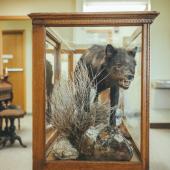
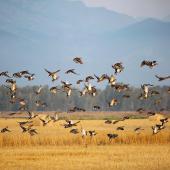




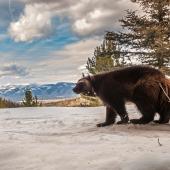

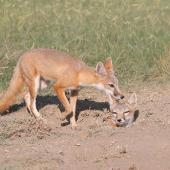
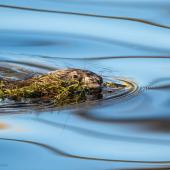


Leave a Comment Here